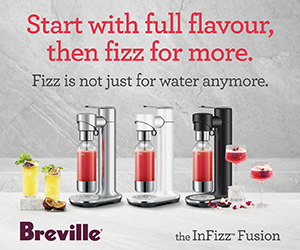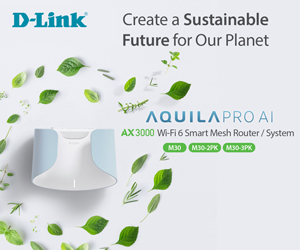Coffee machines come in all shapes and sizes, but the Philips 4300 LatteGo may just be the most flexible and fully featured, fully automatic coffee machine at about half the price you would expect to pay.
In fact, it is blitzing independent European reviews averaging 4.5/5 – that is pretty good. We set out to achieve nirvana – can it make as good a cup of coffee as our local barista using the same beans!
Let’s find out.
Philips 4300 LatteGo
| Website | Product Page |
| Price | $999 |
| From | Amazon ($934.04 and free delivery) or selected retailers |
| Warranty | 2-year ACL, 30-day free return |
| Country of origin | Likely China |
| Company | Philips (Est 1891) is a Dutch multinational with interests in lighting, consumer lifestyle, consumer healthcare, and commercial health equipment |
| More | Cybershack Guide: What you need to know to make good coffee at home |

First look
The Philips 4300 LatteGo is a modern-looking coffee maker with a colour screen, a water tank on one side, cup height adjustable with a detachable milk frother.
As you look over the front panel, you begin to see its enormous flexibility. For starters, two user profiles (plus a guest profile) allow individual adjustment (coffee intensity, number of shots, milk amount). There are six customisable coffee programs (Espresso, Coffee, Americano, Cappuccino, Latte Macchiato, and Café au Lait). Then there is the More Drinks sub-menu that reveals Caffe Crema, Ristretto, Milk froth, and Hot water.
Note that this is the premium 4300 LatteGo. It fits in most home décor at 245 (W) x 377 (H) and 434mm (D). There is a 2200 LatteGo with three beverages ($899) and a 2200 version with two beverages and a steam wand ($799).
Setup
It has an AquaClean filter that reduces the need to descale for about 5000 cups – excellent. It also has a pH test strip to set the water’s alkalinity/acidity (significantly impacting coffee taste).
Add beans (the hopper holds 275g), fill the slide-out water container (1.8L), and plug it in (1.8m cord), and that is it.
There is no Bluetooth connection or an app – and we think that is a good thing.



BUT, I think Philips has missed a huge opportunity to explain each type of coffee and how to adjust its makeup. Instead, there is a 25-page technical manual covering cleaning and maintenance. I strongly suggest that Philips develop a coffee taste/user guide and ‘how to’ adjust coffee types and what that does.
Why? Because my first, second, and more cups were terrible
I used the same beans as my barista, the same milk, and a similar cup size, but the coffee (Cafe au Lait for my wife and Espresso for me) was watery and weak. Now I know a thing or three about coffee (written a popular tech guide), but I could not get a drinkable coffee despite playing with individual settings.
I took the machine to my friendly barista, Sam and Booker Bay café (the best coffee on the NSW Central Coast Peninsular). We experimented for an afternoon, trying to get as close as possible to his excellent coffee. We started with Espresso and later Cafe au Lait.
The image below shows bean, cup size, and milk, but that is not what they do.

- Bean seems to impact the strength. It has six steps from a ground coffee bypass to a full bar. We think that means the weight of the grounds and tamping pressure. If you want strong coffee, ramp this up.
- Cup size is how much water is in your shot – not the overall cup size. It adjusts from 50, 70, 90, 120, and 150ml – why initial attempts had such weak coffee. We recommend 50 or 70ml if you have the ‘Bean” on strong settings.
- Milk size (plus froth) is 50, 70, 90, 120, and 150ml.
Espresso
A barista shot uses about 15-20g of coffee grounds, and 30 ml of total water. So, a double/triple shot is 40/60g grounds and 40/60ml total water. We selected the strongest bean setting and 50ml (minimum water), close to a barista single shot. The 70ml setting was weaker. Forget 90/120ml settings, as the coffee comes out way too weak.
So, it is suitable for a single shot. Select Espresso or, better still, Ristretto and run the program two or three times if you want more shots. We measured the coffee temperature at 90° – about right.
Cafe au Lait
Let’s say you are used to a large 16oz (500ml) Flat White coffee where the barista uses three individual coffee shots or 90ml of coffee. Then he steams 400 ml of milk for a total of 490ml plus a little froth. Or for a medium 12oz 400ml cup, it is two shots (40g coffee and 60ml in total) and 320ml of milk plus froth.
So here is the conundrum – the Philips LateeGo 4300 has a maximum of 150ml milk with a little too much froth. This only suits a 50 ml shot in a 200ml cup. A small 8oz cup is 280ml. The answer is to make a 200 ml small coffee and don’t try to fill the cup.
If you want a bigger cup, you have to run the program two to three times.
So, did we achieve nirvana? Nearly.
After a few hours and perhaps 30 coffees, we got the Espresso almost right and the Café au Lait near enough. In other words, we could make a coffee at home that would stave off the need for a coffee hit. No doubt that we can improve on that over time.
The real point is It is not about the eight programs so much but the need to experiment to get a cup you like. And make sure you use a 200ml cup!

LatteGo milk system – hygenic
The LatteGO container holds 250ml of milk. Milk is sucked up from the bottom of the container and sent via a steam centrifuge out of the spout.
It is a good design because the milk in the container does not contact the stream (hygienic) until the last second, and you can safely place the leftover milk in the container back in the fridge. Word of advice – hit the cleaning button before you do that to clean the centrifuge and spout.
It produces a ‘tad’ too much froth for my wife’s liking, and we cannot find how to adjust that, but Cappuccino lovers will be right at home.
Depending on the program, it may add milk before or after the coffee shot. We measured the milk temperature at 65° (60° is average).
Pre-ground coffee bypass for decaf lovers
The bypass allows you to use decaffeinated coffee grounds or another type of coffee ground. The 20ml scoop affirms the usual coffee ground quantity.
Grinder – don’t play with it
It is a ceramic grinder rated for 20,000 cups – that should last years. Beans sit under an airtight aroma cover.
It is set mid-way and is perfect for the 15-bar pressure of this machine. You would only adjust it finer or coarser if the bean dictates that (and most will not).
Cleaning – fairly easy
Each time you power it on, it flushes the hot water pipe. You should clean the LatteGo after each use.
Descaling using the AquaClean filter CA690 is unnecessary if you change filters when the machine indicates. But every few thousand coffees use the Philips descale CA6700 solution. Do not use commercial descale solutions based on sulfuric acid, hydrochloric acid, sulfamic, or acetic acid (vinegar).
The heater block is called a brew group and needs weekly washing. It requires occasional Coffee Oil remover CA6704 and grease HD5061 for the tamping piston.
The drip tray needs regular emptying, as does the coffee ground container. We recommend at least weekly as coffee grounds are damp and can grow mould quickly.




We understand that spare parts will be available.
Power – cheap to run
While it consumes power while switched on, it is a miser when in sleep mode. It is not expensive to run.
Cybershack verdict – Philips LatteGo 4300 is excellent for the price
We started by saying that the Philips 4300 LatteGo may just be the most flexible and fully featured, fully automatic coffee machine at about half the price you would expect to pay. So, that means it is good value.
The main compromise is the 200ml cup size. The other is that out of the box, you must experiment. At least we got it close to our friendly barista-made coffee.
Otherwise, it meets or exceeds our expectations.
Rating
We use a 10-point scale, with 5 being a bare pass mark. We add points for the build, warranty, ability to exceed the task, and any class-leading features. As far as the price, we prefer to rate on value, so as a $1000 machine, this is outstanding value offering features found in more expensive machines.
The only negative is that we had to experiment more to get the perfect milk coffee, but anyone reading this review will see it is all about customising to your taste.
We concur with European reviews – it is a 9/10.
Competition (with Milk)
- De’Longhi Dinamica ECAM $1199
- De’Longhi Dinamica Plus $1699
- Jura E6 $1699 plus optional milk carafe
- Jura E8 $1899 plus optional milk carafe
- DeLonghi PrimaDonna Soul $1999
CyberShack Verdict
Philips 4300 LatteGo automatic coffee machine
$999










12 comments
Daniel
Question regarding espresso shot volume minimum. You say 50ml is the lowest volume. My 4300 says 30ml, was this a typo, or different machine?
Thanks
Ray Shaw
Sorry I don’t have the 4300 any more. We do measure volumes – Philips may have changed the minimum volume in later production runs.
Ben
Awesome article with some very helpful particulars. Any further settings you’ve dialled in for the other drinks?
Ray Shaw
Sorry we had to return it after the review period was up. The key message is get the black coffee strength right first and then play with milk if you need it. I recall that the Barista changed beans to a stronger one and we then had to reduce the number of shots accordingly.
Luke D
Love the review.
I have been using the 4300 for a few days now with my favourite café beans (also live nearby in Tweed Heads). Do you believe the machine dispenses the same amount of coffee weather it be 50 ml, 70ml or greater ?
I’m a cappuccino drinker so I imagine the setting may be similar to your wife and was wondering hers is set at ? from what I read above you cycle it through twice when you are trying to get a café 400ml drink. I will try this in the coming days.
Currently I have my settings set at: Aroma: 10 Bean:40ml Milk 120ml. I’m struggling for the perfect balance as some times my coffee tasting a bit weak or at the start a tad bitter.
Any advice or update in relation to this would be fantastic !
Ray Shaw
As I replied I no longer gave the machine so it is stretching my memory. The grinder dispenses the same amount of grouds regardless of the water you select. That is why we selected 50ml water – our barista uses 30ml per shot so it will be a weaker shot than you get at a cafe. I think Ristretto is a stronger shot. Try 50ml shot, 100ml milk and one or two ristretto. If you find two (total three) shots are too strong back off the bean setting to 75%. The Philips Help site is here.
PS – Central Coast is 90 minutes north of Sydney. I Love the Tweed (as a former Queenslander) but prefer the weather here.
Luke
I found this article extremely informative. I am currently in my second day of trailing this machine. Similar to your wife, I like standard double shot cappuccino.
I understand the explanation of bean. But what I am still trying to get my head around is coffee (second column). So regardless on what is chosen, the same amount of coffee is dispensed just with different variences of water ? Also is it the equivalent of a single shot regardless?
Since we live in similar provinces (I am Tweed Heads) we may have a similar taste in coffee. If that’s the case it would be aroma max, coffee 50 mil, milk 150mil and run the machine twice ?
Ray Shaw
Hi Luke. I no longer have the machine, so this is from memory. It uses a 200ml cup size. We set the grinder at 5 (default), bean strength at 100% (it is the tamping pressure, and I think you can safely start at 50% depending on beans) and milk at 90ml. After we make the milk coffee, we added a single 50ml ristretto shot that (Drinks sub-menu).
David J
Thank you so much for a detailed review including the milk temperature. Extremely informative, coming from a 3 year old overpriced Jura that’s nearly packed up I’ve been looking at this machine and you’ve convinced my purchase.
Ray Shaw
Happy to help. Jura is not too bad – it depends on what you need.
David
Gday Ray
We have only had ours a couple of days, and to be honest, until I read your review I was a little concerned.
You have given me a little more confidence.
Your suggestion on Philips providing a drinks configuration is spot on.
Can I impose on your expertise and experience?
For a cafe au laite large cup, what would be your settings?
And for a cappuccino, standard cup size, again your settings?
And again a silly, but how long should you keep the beans in the hopper?
Ray Shaw
Hi David. Unfortunately, the machine had to be returned so these are from memory. Beans in the hopper – a few months is fine. Store unused beans in an airtight container in the fridge. If you like strong cafe au lait ramp up the bean icon (then later adjust down to taste), shot water on 50ml and milk on 150ml. Cappuccino – similar to Cafe au lait but you need more milk froth and the pre-set fixes that. It is all about experimentation, especially for milk-based coffee. The most important is to get the right black coffee strength and play with milk levels later.